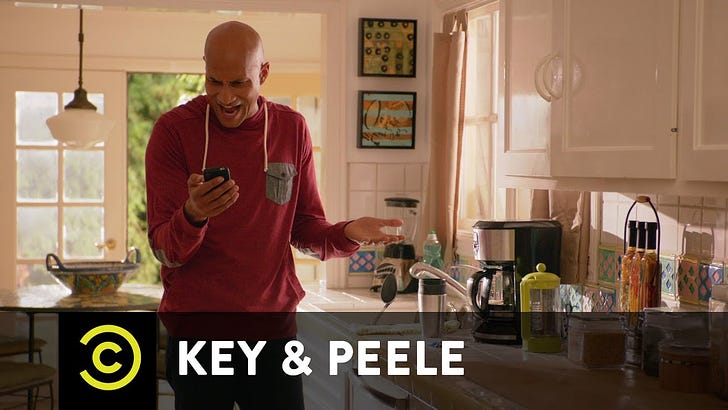How Personality Judgments Turn You Into a Cruel Person
Plus Sex Differences in Workplace Rewards and Performance Evaluations
I remember teaching my now 17-year old twin daughters to drive on busy highways. We rolled up to a red light, each lane headed by a single car. "Which lane should I choose?" one asked. I suggested she quickly assess clues each vehicle offered, predicting which would speed away first when the light changed.
She voiced thoughts eagerly: "The car on the left has a wilting Coexist bumper sticker and a few peace symbols. It screams 'chill.' The driver’s probably gazing at the clouds and could care less when the light turns green . Now the minivan on the right? That driver is probably a suburban parent on a mission. She raced to the line, braking hard at the last second. She's ready to pounce the moment the light shifts. I'm sticking behind her."

This was a glimpse into her budding future career as a psychologist—using stereotypes to sharpen pattern recognition on the road. It’s absurd to ignore the strength of situational awareness. Consider the many scenarios she’ll face: Is that driver alert? Any signs of drunkenness? Should I keep my distance for safety? I also train her to do this in the gym and on city streets to distinguish quickly between annoying + threatening versus open + supportive men.
With this backdrop, let me introduce you to an under appreciated body of research on stereotypes and “self-construction” by Constantine Sedikides.
Public Versus Private Appearances
In our interactions with others, to conserve cognitive energy, we categorize people based on perceived personality traits. While efficient, helping us make decisions when confronted with too much uncertainty, they can lead to oversimplified and inaccurate judgments. These personality perceptions become dangerous when applied in high-stakes, low urgency situations such as job interviews - where there is plenty of time to ask absolutely anything and pay close attention to non-verbal cues to understand what makes a person unique.
Have fun with the questions. Sometimes, the best questions are indirect, catching someone off-guard as you learn a great deal about their interests, values, and strengths without mentioning any of these terms. Such as:
If you could be the sidekick of your favorite super hero/super villain who it would be and describe why?
Research from the early 1990s shows how we form lazy assumptions about someone’s personality based on small bits of information.
Consider the case of Marissa Mayer, a corporate executive thrust into the chaos of Yahoo, a failing company. She receives an enormous compensation package. Even though her ability to negotiate a salary is irrelevant to the ease of fixing the company’s many problems, that is now how the outside world views it. She is scrutinized less for what she did or didn’t do and more for the fact that she earned so much money to fix it and she couldn’t.
A perfect situation to remember the common belief that everyone is biased (except me). An observation made way back in 1949 by sociologist Gustav Ichheiser (here):
We tend to resolve our perplexity arising out of the experience that other people see the world differently than we see it ourselves by declaring that those others, in consequence of some basic intellectual and moral defect are unable to see things as they really are and to react to them in a normal way. We thus imply of course that things are in fact as we see them, and that our ways are the normal ways.
Plenty of journalists piled on Marissa Mayer, viewing her reign as CEO of Yahoo as a monstrosity (here) - forgetting how impossible of a task she was asked to fix. We could talk about sex differences in workplace rewards. After all, a study of 95,882 performance evaluations over 30 years finds that the difference between the rewards men get at work compared to women (salary, bonus, promotion) is “14 times larger than sex differences in performance evaluations” - that is, despite almost no differences in performance, men win whether the succeed or fail whereas women must be extraordinary. Which is insane!!! Let’s leave the sex difference conversation there, with an exact number (14), that must be reckoned with…
For now, I am more interested in discrepancies between the public facing person (in this example, a corporate executive brought in to fix the unfixable) and her life behind the scenes - a litany of other important life domains that also require time and energy. Because organizations love to mention work-life harmony until there is a less than stellar performance evaluation.
As an illustration of this public-private discrepancy, consider a hypothetical corporate executive that matches onto the Marissa Mayer story rather closely. All I did is change the image so that it reflects a male executive (from here). We begin with the headline - profits plummeting under his watch. From there, we dig deeper into the multiple social or identity roles that co-exist and the personality dimensions that are publicly displayed or invisible.
Similar to Marissa Mayer, this hypothetical male executive grapples with accusations that erode his self-worth. Each biting comment chips away at his competence and work ethic. This narrative, reinforced by a large number of stories published by journalists, becomes his own - infusing his self-perception with a sense of doubt and regret.
His mind wanders to the countless hours spent at work, the vacations sacrificed, and marital tensions that simmered, unaddressed because work came first. This inner turmoil activates even more defensiveness against being scapegoated for the company's downturn. As he reflects on missed moments with his children, he questions whether the sacrifices were worth it. The weight of unfulfilled commitments looms large, exacerbating a sense of injustice.
These executives, who we do not know (I repeat: we do not know their lives) stand at the crossroads of professional duty and personal sacrifice. It does not matter how much money they earn. We do not appreciate the gap between public perception and private struggle. If we truly care about workplace well-being, and improving people’s lives, we must get better at perspective-taking.
Perspective taking, which can be defined as adopting another person׳s viewpoint (Parker & Axtell, 2001), may be a way to reduce the [fundamental attribution error] FAE. For example, a person with well-developed [perspective taking] PT skills should be able to view a situation from the perspective of another individual and thus anticipate their beliefs, desires, emotions and intentions (Epley, Morewedge, & Keysar, 2004). Perspective taking has been empirically implicated in various ways; it has been recommended as a simple strategy for reducing social bias and for strengthening the creation and maintenance of social bonds (Galinsky, Ku, & Wang, 2005), it has been used to reduce stereotyping (Yee & Bailenson, 2006) and it has been shown to improve negotiation skills (Galinsky & Mussweiler, 2001).
Implicit Personality Theories
Implicit personality theories shape our perceptions, often leading us to snap judgments. We see a “scientist” and assume they're cold and analytical, ignoring the warmth they might share with friends. Spot a ”tattoo artist,” and we think they're rebellious and carefree, missing the discipline and precision needed for their craft. These labels simplify, but they obscure the multi-dimensional people who live in particular ecosystems.
Cultural Conditioning
Our culture shapes snap judgments. We absorb societal images and norms, and they skew our perceptions. Meet “someone in a wheelchair”? You might see them as both resilient and dependent. See a woman in a boardroom? You might assume she's both ambitious and cold. These traits, while culturally linked, are inversely correlated. It doesn’t make sense rationally. It only makes sense because we mindlessly agree with what other people banter about.
The Problem with Automatic Assumptions
Reinforcement of Stereotypes: The automatic activation of personality assumptions reinforces stereotypes, making them more resistant to change. This can perpetuate biases and hinder our ability to see individuals as they truly are.
Challenging the Automation
To counteract the automatic nature of these assumptions, we must actively engage in critical thinking and self-reflection. Here are some strategies to consider:
Question Your Assumptions: When you find yourself categorizing someone, take a moment to question the assumptions made. Are these qualities truly linked, or a product of cultural conditioning?
Seek Diverse Perspectives: Engage with people from different backgrounds and cultures to broaden your understanding of personality and situations. This can help you break free from the prism of what you’ve absorbed over time. Read this:
Provocations
Personalities in Prison: Reflect on how your behavior and personality might change if you were placed in a completely different cultural setting. Let’s say prison. How would your core traits manifest, and which lesser features of your personality would come to the forefront? Assess how you think you’d fare in prison in light of these attempts to adapt.
You are not immune to situations. Remember this the next time you judge a person before taking stock of environmental forces that push and pull them to act in certain ways.
Hope you enjoyed this work. Please support me in 3 ways:
Share this post on social media and send it to friends (hope they enjoy it);
Leave a ❤️ and comment (which gives an algorithm boost);
Subscribe (with benefits such as the chat room and 200+ article archive).
Become a Paid/Premium member - leave thoughts inspired by this issue in our chat room.
Todd B. Kashdan is an author of several books including The Upside of Your Dark Side (Penguin) and The Art of Insubordination: How to Dissent and Defy Effectively (Avery/Penguin) and Professor of Psychology and Leader of The Well-Being Laboratory at George Mason University.
Read Past Issues Here Including:
Flippant Claims of Trauma + Silver Linings in Psychological Disorders
If you seek connection, join the wise, playful, compassionate, non-judgmental Provoked community - and get access to monthly calls and 200 archived posts.








